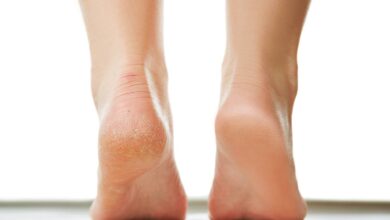Your go-to resource for a healthy diet and weight reduction during Ramadan
Both Ramadan and the aroma of Rooh Afza sharbat on the streets are quickly approaching. Muslims worldwide are preparing for the month of fasting, which begins in just two days and is the holiest month of the Islamic Hijri calendar. The holy month, often called Ramzan or Ramadan, is a 29- or 30-day period that occurs in the ninth month of the Islamic calendar.

As people fill their shelves with dates, fruits, pheni, cutlets, dried fruits, meat, and an endless supply of other items, the preparations are well underway. Ramadan is a great time for those who are mindful of their weight and fitness to moderate their meals with nutrient-dense foods and practice intermittent fasting.
Starting at sunrise, the fast lasts until sunset. Muslims also have to refrain from drinking water. Muslims only eat two meals throughout Ramadan: suhoor, which is offered before dawn, and iftar, which is eaten before dusk. With such rigid meal times, individuals may tailor their diets and benefit from fasting.
In an interview with Midday.com, Gayatri Trakru, a dietician and nutritionist at Ruby Hall Clinic in Pune, walks us through a low-carb, high-protein, and high-fiber meal plan that may help you lose a few pounds in a healthy way. She emphasized the need to be hydrated and stressed the need to make sensible food and drink choices in order to prevent dehydration and sustain energy levels throughout the day.
Take this quiz to see how much you know about the fasting month of Ramadan.
Observations for Ramadan:
1. Because Ramadan falls during the summer, there is a lot of fluid loss. Therefore, in order for water retention to continue throughout the day, it is crucial to drink enough of fluids.
2. Eat more hydrating foods, such melons, cucumbers, and tomatoes, since they are high in fiber and compensate for water loss.
3. Avoid tea, cola, energy drinks, and other coffee-based drinks. Sugar content in fizzy drinks is significant, adding empty calories to the diet.
4. To convert from a diet that burns carbs to one that burns fat, include foods high in unsaturated fats, such as avocado, olives, and unsalted almonds.
5. Steer clear of processed meals heavy in fat, such as fries, spaghetti, pakodi, and cutlets.
Meals that will be served:
Suhoor is served before sunrise.
To offer you energy for the rest of the day, this meal should be well-balanced and nutritious, consisting of complex carbs like fruits and vegetables together with proteins like eggs and lentils. These foods may be alternated moderately between days for Suhoor meals. The food items on the following list are available for selection:
1. Smoothies or oatmeal cooked with milk
2. Pulses, ideally in the shape of sprouts, such as chana, matki, and moong
3. Scrambled eggs with tomatoes, onions, and capsicum in 1 tablespoon of butter
4. Uncooked avocado on rotis
5. Yogurt or curd free of added sugar or flavorings
6. Dipped fruits in curd
7. Fried chicken with vegetables
8. Lettuce, cucumber, strawberries, and watermelon
9. Smoothies with banana and mango
10. Cereal and milk
Iftar (provided at dusk)
Your body will have an overwhelming need for food and liquids after fasting for more than 12 hours. At this point, a lot of individuals make the error of overindulging in fried and fatty foods, which are worse for an empty stomach. Gayatri provides a list of foods that may be included in iftar meals in order to cut out bad food and eat wholesome foods:
1. Start the day with two dates and a little amount of water.
2. A dish filled with fresh fruit, such as bananas, oranges, strawberries, apples, and melons
3. Refreshing beverages like Rooh Afza, lemonade, and thandai
4. Steam-cooked dahi wada, ideally with moong dal
5. Chicken (steak, roasted, or grilled)
6. Butter-cooked mixed veggies
7. A cheese cube
8. Coffee or tea with reduced sugar or jaggery
9. Mutton or chicken cutlets, or kebabs
10. Palak and steamed fish







